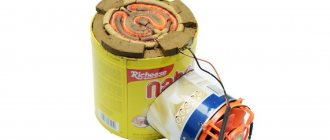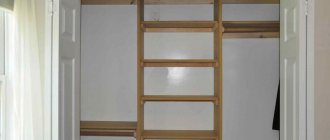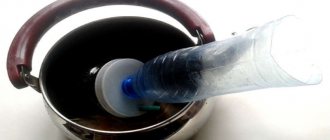We have already published a translation of an article dedicated to a smoke eliminator for soldering. That article was about an Arduino-based sensor that automatically turns on the smoke eliminator when the soldering iron is removed from the holder. And today we will talk about making a smoke eliminator yourself.
Homemade Soldering Smoke Eliminator
Anyone who is into electronics knows that soldering plays a vital role in almost all of his projects. However, it is unlikely that anyone will like to inhale the smoke that is released when solder and flux are heated. This smoke has a terrible smell and can be harmful to your health, but the dangers associated with it can be reduced by using a smoke eliminator. This device, which captures toxic fumes, will be useful even to those who solder infrequently.
You can buy a good smoke extractor, but it will cost more than $70. Having learned about this, I made such a device myself, using a 120 mm computer fan and a 3D printed case.
Materials and tools
For this project you will need the following materials:
- 12V fan
- Fan speed controller
- Power connector
- Key switch size 15×10 mm
- 5mm LED
- 580 ohm resistor
- Wires, 22 AWG
- Heat shrinkable tube
- Cage nuts M3
- Activated carbon filter
- Double-sided adhesive tape
- M3x12 screws
- M5x8 screws
- Rubber feet
Here is a list of necessary tools:
- Soldering iron
- 3D printer
- Wire cutters
- Wire stripping tool
- Hot air gun
Air purification methods
There are several options for protecting a room from the accumulation of toxic particles.
If the work is carried out in a kitchen where forced ventilation with a mounted unit is installed, it makes sense to place the soldering area directly below it.
Typically, fume hoods are hung above the stove. You can close the top panel of the oven and create a work space on it. Working this way is not very convenient, but it is safe for health.
A separate workshop in which soldering is carried out frequently should have special equipment for air purification. A good option is a hood for soldering work, which can work according to the principle implemented in professional or household equipment.
If you don’t have a workshop, and it’s inconvenient to work under a kitchen hood, then it’s advisable to buy a special device for home soldering. There are tabletop smoke eliminators on sale that have affordable prices and good performance. Their range is wide.
Homemade apparatus
What types of filters are there for ventilation and air conditioning systems?
Our smart people figured out how to make a smoke eliminator for soldering themselves. To do this you need a few main details. It's easy to purchase them. It is very likely that you already have them in your home storage.
A fan is installed on screws. A grid is cut out of the outer bowl, onto which a metal wire frame is attached.
The filter is fixed to the frame. A filter from a kitchen hood is suitable for soldering. Install the smoke extractor on legs made of thick wire. With this equipment, soldering at home will be a safe activity.
Tinning the board and soldering are accompanied by the release of toxic smoke. The process is particularly intense when tinning boards. Toxic smoke poses a risk to human health.
A soldering hood eliminates this problem. The device first sucks in smoke, then blows it out in the opposite direction.
When melting solders and rosin, harmful substances are released containing:
- antimony and cadmium;
- arsenic and zinc;
- tin and lead;
- fluxes with hydrazine.
Moreover, the melting of fluxes means the release of aerosols with a specific odor and gases. The result is air pollution in the production area. The content of substances hazardous to health in the workplace exceeds the permissible concentrations. Fluxes that melt increase contamination by forming hydrazine and formaldehyde. According to the accepted classification, they are both carcinogenic.
The smoke eliminator is a filtration and exhaust system. It is able to ensure clean air in the workplace.
In fact, it is able to serve even two workplaces, removing and purifying polluted air during soldering.
The release of carcinogenic and highly toxic substances is accompanied by purification using a gas-chemical filter made of activated carbon. After this, the contaminants are released into the ventilation system or removed outside.
Finalization
It’s clear that something will have to be farmed here to get it into working order. This is what we will do. For this case, I needed nothing at all, an old 12V computer cooler, a jar of honey, a housing from a non-working solar-powered garden lamp.
Since the body of the lamp is cone-shaped, I cut off such a part from it that it could be pushed into the hood without any problems. I cut a hole in the bottom of the jar for the body.
The joint area was filled with glue. I put the tube on and secured it with a metal clamp. A fan was installed at the outlet, which operates to blow out when power is applied. I planned to place the wires inside the tube first, but decided to press them with rubber bands from the outside.
The holes on the funnel were sealed with blue electrical tape.
Now the end of the tube can be brought out the window
The tube was long enough to fit flush
The height from the table to the edge of the funnel with the maximum curved bracket is about 37 cm
those. The 8-arm holder fits quite well in terms of dimensions
Finally, an animation of what it looks like in action:
Safety precautions
When operating the device, you need to pay attention to compliance with safety precautions. The smoke eliminator requires caution due to the potential for electrical shock and fire hazards. Before you start working with the device, you need to have a clear understanding of the main safety requirements:
- the instruction manual must be kept in an accessible place;
- the device must not be used to suction an explosive gas mixture;
- it is necessary to protect the electrical power cable from mechanical damage, oil and fire;
- the device must be on a solid horizontal surface during soldering;
- you cannot run the device without filters;
- when replacing any structural elements, including filters, you must use original products;
- Before opening the lid of the filter chamber, you must disconnect the cable from the power supply;
- Technological openings in the device must not be closed;
- The device must be protected from exposure to damp environments.
When connecting the smoke extractor to the electrical network, you must first familiarize yourself with the information contained on the factory mark. The phase pattern and type of current, the rated voltage value are indicated there. It is also necessary to check the reliability of the connection with the exhaust device and the hose apparatus, as well as the integrity of the electrical cable. The soldering process will be completely safe.
During the board soldering process, toxic substances are released. Toxic substances have a strong destructive effect on human health. It is strongly recommended to carry out such operations using a soldering fume extractor or soldering hood.
During the melting of solder and rosin, substances such as antimony, cadmium, arsenic, zinc, lead and others are released into the air along with the smoke. During work, carcinogens and formaldehyde accumulate in the room. A smoke eliminator for soldering protects a person from the direct entry of poisons into the body. The hood sucks in the smoke and redirects it in another direction.
A soldering smoke eliminator is a device that filters and extracts contaminated air. Thanks to this device, the air in the workroom remains clean and safe for humans.
Ventilation device
The operating principle of all models for home soldering is similar. The main structural elements of the smoke eliminator are as follows:
- a grille through which dirty air enters the device;
- fan;
- filter with adsorbents;
- back panel with holes for the purified stream to exit.
Activated carbons are usually used as adsorbents for soldering. The smoke extractor is located on the table using legs. The angle of inclination relative to the working plane can be varied.
If desired, the device can be directed strictly vertically or parallel to the table surface, horizontally.
The power of smoke eliminators usually varies from 15 to 19 W. More powerful models are used in industrial soldering equipment.
Within one minute, the devices can purify from 0.9 m3 to 1.1 m3 of air. Smoke extractors are easily portable, their weight does not exceed 1.5 kg. The slots on the back panel are made so that the purified flow rushes upward. It's a smart decision.
If the air was directed in a horizontal plane, it would fall on the nearest wall. With this design option, air exchange during soldering cannot be effective.
High-quality smoke extractors operate silently. After the period of operation specified in the instructions, the filters should be replaced. This is done very simply.
Additional filters must be purchased from a supplier that offers solder smoke eliminators for this model. This minimizes the likelihood of the filter not matching the device.
Ventilation device
The operating principle of all models for home soldering is similar. The main structural elements of the smoke eliminator are as follows:
- a grille through which dirty air enters the device;
- fan;
- filter with adsorbents;
- back panel with holes for the purified stream to exit.
Activated carbons are usually used as adsorbents for soldering. The smoke extractor is located on the table using legs. The angle of inclination relative to the working plane can be varied.
If desired, the device can be directed strictly vertically or parallel to the table surface, horizontally.
The power of smoke eliminators usually varies from 15 to 19 W. More powerful models are used in industrial soldering equipment.
Within one minute, the devices can purify from 0.9 m3 to 1.1 m3 of air. Smoke extractors are easily portable, their weight does not exceed 1.5 kg. The slots on the back panel are made so that the purified flow rushes upward. It's a smart decision.
If the air was directed in a horizontal plane, it would fall on the nearest wall. With this design option, air exchange during soldering cannot be effective.
High-quality smoke extractors operate silently. After the period of operation specified in the instructions, the filters should be replaced. This is done very simply.
Additional filters must be purchased from a supplier that offers solder smoke eliminators for this model. This minimizes the likelihood of the filter not matching the device.
Filtration and ventilation qualities
The unit housing contains two turbines and filter elements. It is used with one or two exhaust devices. The radius of the working area can be up to 74 centimeters. The purified air is removed using a ventilation grille. The mini-exhaust device can have a tube diameter of 5 centimeters made of anodized aluminum.
Air ducts or flexible hoses supply air through the inlet pipe into the filter chamber. It performs preliminary cleaning. There is also a two-stage filter element here. Soldering suction means complete workplace safety. The filtration process is carried out in three stages:
- Preliminary filtration (the largest particles in mechanical impurities are captured, replaceable filter material needs to be periodically replaced).
- Main cleaning from impurities containing particles up to 0.01 centimeters.
- Retention of gases and odors.
The service life of the filter elements is determined by the intensity of operation of the filter-ventilation unit. The built-in control system controls the accumulation of substances hazardous to humans. The smoke extractor has an audible and optical warning signal about filter contamination or other problems.
The suction power can be adjusted using the built-in rotor speed setting in the motor. The device, having removed smoke from the soldering area, performs subsequent highly efficient filtration of combustion products. The use of the device allows you to make the air clean not only in the workplace, but also in the room as a whole.
Contaminated air particles are sucked out using a nozzle, exhaust hood or other intake device. The filter catches the smallest particles, the smell is adsorbed by activated carbon. After passing through three stages of purification, the air is drawn in by two turbines and discharged out through the exhaust opening.
Homemade apparatus
Our smart people figured out how to make a smoke eliminator for soldering themselves. To do this you need a few main details. It's easy to purchase them. It is very likely that you already have them in your home storage.
The inventors recommend that as a basis for production, take 2 plastic bowls of different sizes, which need to be placed one inside the other. Cut a hole in the inner bowl.
A fan is installed on screws. A grid is cut out of the outer bowl, onto which a metal wire frame is attached.
The filter is fixed to the frame. A filter from a kitchen hood is suitable for soldering. Install the smoke extractor on legs made of thick wire. With this equipment, soldering at home will be a safe activity.
Appearance
This is the heaviest part of the combined package with Taobao - 1.1 kg. The kit includes: 1)
Flexible bracket with fastening to the table and a funnel
2)
Air duct (2 meters)
3)
Damper in the funnel
4)
2 clamps
Color grey. The material feels thick to the touch
Length at rest: slightly more than 1 meter
Diameter approximately 8 cm
The inside of the pipe smells like gouache paints. Over time this smell goes away
A steel rod (1mm) comes out from the edge of both ends, which runs in a spiral through the entire pipe
How it stretches
Now to the funnel on the bracket.
The bracket itself is flexible, but bends tightly. Its length is 60 cm, thickness 12 mm
At its end there is a screw fastening to the edge of the table
It is attached to the funnel using one nut through a plastic gasket
Rust is visible in the internal cavity of the bracket
The funnel is made of transparent ABS plastic
It has a ribbed surface along the perimeter of the wide part
Height 133.6mm, diameter at the narrow part - about 70mm, at the wide part ~14.5cm
On the outer side there is a rotary handle for rotating the damper. In theory, the damper is a useful thing, because... when closed, it will prevent drafts if the hood is installed through a hole in the wall or a drilled hole in the window.
Damper with two clamps
Funnel with installed damper
Animation demonstrating how the damper position changes
The bracket was later secured to the edge of the table, after placing a leather shoe tag.
The screw was tightened thoroughly, causing the bracket to begin to bend. The Chinese made it thin.
conclusions
The overall stability of the structure is quite enough so that it does not warp at the slightest touch.
There is still a noticeable reserve in the tripod's load-carrying capacity. In the future I’m going to attach several LED lights here. One of the discovered disadvantages is the fastening of the end of the bracket to the funnel. At least one more nylon washer was reported. Thin metal where it is attached to the table, holes in the funnel. The transparent plastic funnel gradually becomes clogged with dust, this is not surprising. What I liked was the overall flexibility of the design; you can turn and direct it as you wish, which makes it more convenient to use. By absorption. With a 12-volt cooler installed at the outlet of the tube, smoke begins to be sucked in at a distance of about 20 cm from the edge of the funnel, which is not much, but quite tolerable, and certainly better than soldering without a hood at all, therefore the assembly option is far from final. In addition to LEDs, I plan to buy a more powerful fan. Overall quite satisfied. _______________________________ Delivery
The hood, which is the heaviest part, was purchased as part of a combined parcel (1.5 kg) through the intermediary www.yoybuy.com. The total price was $40 + shipping with fees ~$26. The cost of delivery from the seller to the intermediary’s warehouse, then to the TK warehouse in the Russian Federation depends on the weight and price of the goods. When placing an order, a $10/$50 discount coupon was applied, which is also available to new users registered on the intermediary’s website for placing their first order.
The product was provided for writing a review by the store. The review was published in accordance with clause 18 of the Site Rules.










